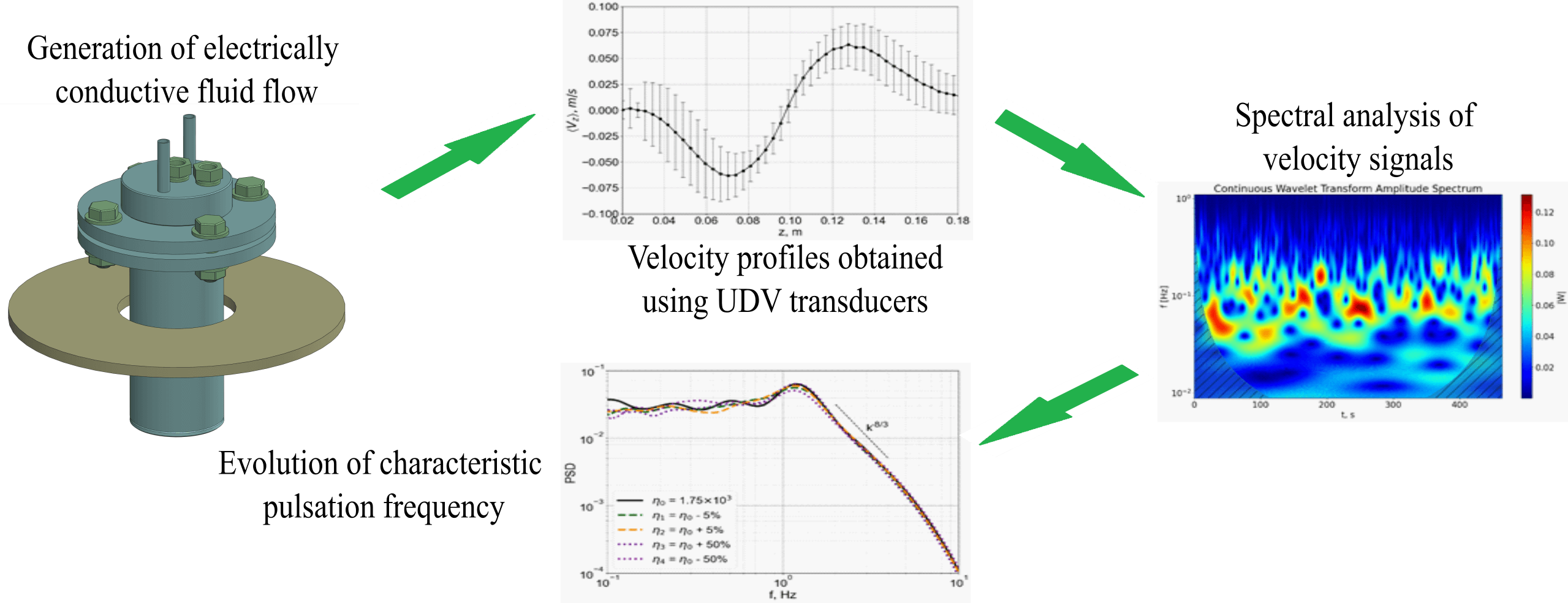 Open Access
Open Access
ARTICLE
Experimental Study of Liquid Metal Flow for the Development of a Contact-Less Control Technique
Laboratory of Technological Hydrodynamics, Institute of Continuous Media Mechanics of the Ural Branch of Russian Academy of Science (ICMM UB RAS), Perm, 614018, Russia
* Corresponding Author: Aleksandr Poluyanov. Email:
(This article belongs to the Special Issue: Advanced Problems in Fluid Mechanics)
Fluid Dynamics & Materials Processing 2024, 20(7), 1553-1563. https://doi.org/10.32604/fdmp.2024.050165
Received 29 January 2024; Accepted 21 March 2024; Issue published 23 July 2024
Abstract
The article presents an experimental study on the flow of an eutectic gallium alloy in a cylindrical cell, which is placed in an alternating magnetic field. The magnetic field is generated by a coil connected to an alternating current source. The coil is located at a fixed height in such a way that its plane is perpendicular to the gravity vector, which in turn is parallel to the axis of the cylinder. The position of the cylinder can vary in height with respect to the coil. The forced flow of the considered electrically conductive liquid is generated due to the action of the localized electromagnetic force. It is assumed that under the action of the alternating magnetic field, the liquid is heated uniformly, and the resulting heat is quickly absorbed by the forced flow, so that liquid free convection can be neglected. The experiment is carried out using an ultrasonic Doppler anemometer. One transducer is installed in the axially located cylinder sluice and the other transducer is placed in the near-wall region. According to the results, a velocity profile, corresponding to a two-tori flow pattern can be hardly obtained in the low frequency range of the power supply. However, this is possible in the high frequency range. The average velocity profiles depend essentially on the location of the coil relative to the cell. The spectral analysis of velocity signals shows that the amplitude of the velocity pulsations is comparable to the average value of the flow velocity. Such experimental results and their verification through comparison with numerical calculations are intended to support the development of new methods for reducing the intensity of vortex flows during the electromagnetic separation of impurities through an electromagnetic induction mechanism (able to produce an electromotive force that displaces particles).Graphic Abstract

Keywords
Cite This Article
 Copyright © 2024 The Author(s). Published by Tech Science Press.
Copyright © 2024 The Author(s). Published by Tech Science Press.This work is licensed under a Creative Commons Attribution 4.0 International License , which permits unrestricted use, distribution, and reproduction in any medium, provided the original work is properly cited.


 Submit a Paper
Submit a Paper Propose a Special lssue
Propose a Special lssue View Full Text
View Full Text Download PDF
Download PDF Downloads
Downloads
 Citation Tools
Citation Tools